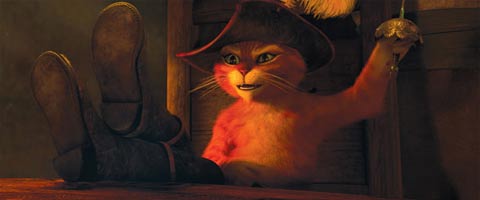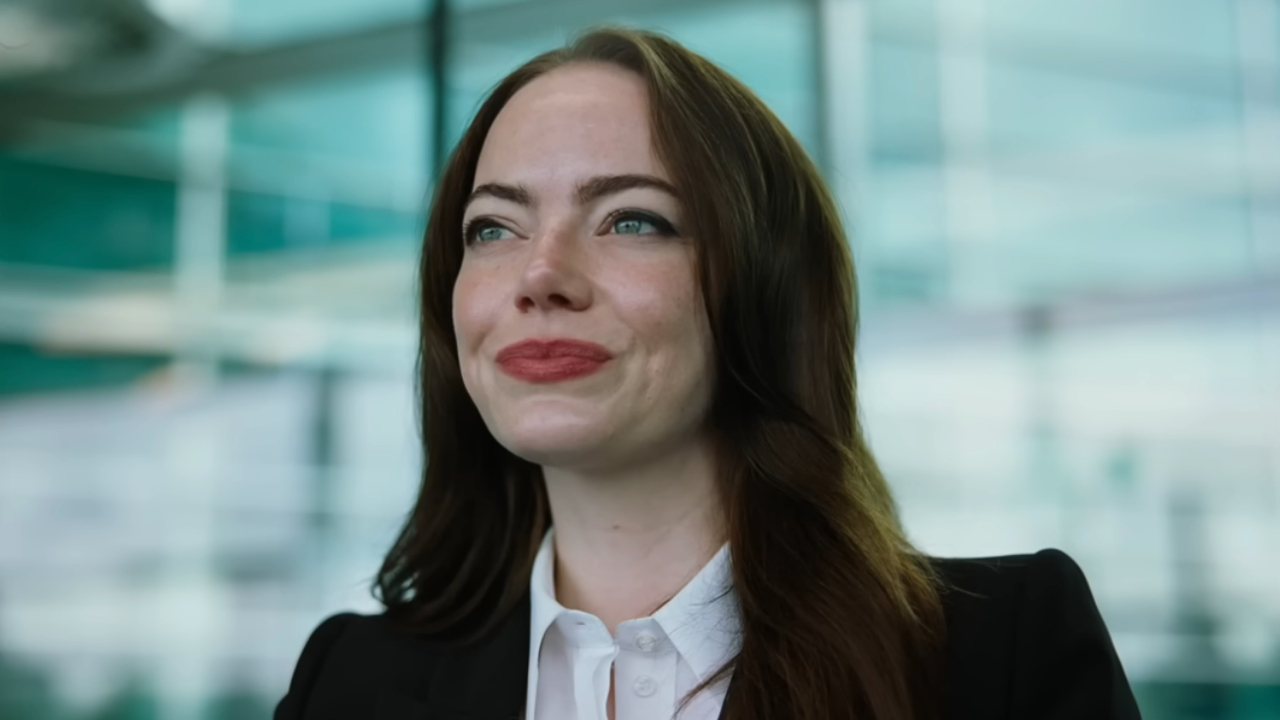To 3D Or Not To 3D: Buy The Right Puss In Boots Ticket

Earlier this year I reviewed the 3D for Kung Fu Panda 2 the most recent movie from Dreamworks Animation before Puss in Boots. I ended up giving the film a score of 32 out of 35 because the 3D utilization was excellent, almost to the point of perfection. Now the question is can the 3D in Puss in Boots top it?
You may have already seen my review in which I say that the “3D that perfectly captures the various landscapes,” but what about the film as a whole? Does it stand up to our vigorous, intense breakdown? Find out below.
Does It Fit?
While live-action 3D has actually made some incredible leaps forward in the last couple years, the maxim remains true: 3D works best with animation and heavy CGI. The reason for this is because the real world has limitations, but anything you create in a computer can be shifted and molded to work perfectly in the third dimension. This idea continues to hold strong in Chris Miller’s Puss in Boots. Furthermore, the film has a solid amount of action, which is always helpful in adding spectacle to the 3D.
Fit Score: 5/5
Planning & Effort
There are a few people really paving the way for the future of 3D and undeniably one of those people is Jeffrey Katzenberg, the CEO of Dreamworks Animation. Back in April of 2010, the executive announced that every film his studio made would be in 3D from now on, and he has successfully kept that promise, with titles like Megamind, Kung Fu Panda 2 and now Puss in Boots. The point is that these projects are envisioned as being three dimensional from the very start, and that planning and effort pays off in this case.
P&E Score: 5/5
Beyond the Window
Your Daily Blend of Entertainment News
Animation is particularly great for 3D simply because it’s the director creating an entire world on a computer. As a result, they can perfectly utilize the “Beyond the Window” effect, which many of you may know better as “depth.” Puss in Boots owns this aspect of the new technology like a cat with a ball of yarn. The landscapes in the movie are absolutely amazing and Miller does a great job of sucking the audience right into the screen. But it’s not just limited to wide, open settings. Even scenes set indoors use the 3D effectively. Needless to say, this area gets a perfect score.
Beyond the Window Score: 5/5
Before the Window
One of the first shots in Puss in Boots is an extreme close-up of the titular heroes face. It’s actually a pretty stunning shot, as it really shows off the extreme beauty and detail of the animation. I did, however, have one thought go through my mind: “Why doesn’t it feel like Puss’ nose is about to poke my eye out?” Sadly, this is an aspect of 3D that isn’t utilized really well in the rest of the film either. While there are some examples of things poking out at the audience, it’s not used nearly as effectively as the “Beyond the Window” half of the new technology. Considering the amount of swordplay and action in the movie, it’s quite disappointing.
Before the Window Score: 3/5
Brightness
When will the brightness problem for 3D be cured? The answer is “when we can finally stop wearing sunglasses indoors. Until then, it’s up to the filmmakers to try and compensate by making their films brighter. In the case of Puss in Boots, this largely a success. Helpful in this department is the fact that most of the action takes place during the day, and there are plenty of light sources to help counterbalance the dark lenses, but where the movie gets in trouble is the night scenes. While they’re not dreadful, the scenes set in the late hours are still a bit murky and not nearly as vivid as they would be in 2D. It’s important to note that this is a factor that changes from theater to theater, as some places don’t use 3D projectors to their full capacity. This, however, is a report about my experiences.
Brightness Score: 3/5
The Glasses Off Test
If you take off your glasses during a movie that uses 3D well, the effect is hard to ignore. With the exception of the plane that you are supposed to be focusing on, everything else appears blurry and out of focus. So how does Puss in Boots do in this category? Exceptionally well, actually. Throughout my screening I would occasionally move my glasses down my nose and peer over them, and what I saw was fantastic. From beginning to end most of the movie is unwatchable without the assistance of glasses, which is exactly how a 3D movie should be.
Glasses Off Test: 5/5
Audience Health
While typically a bigger problem in big action movies where there’s a bunch of stuff happening on the screen at once, 3D has proven to be a big problem for some people, as many experience headaches, nausea and other symptoms of motion sickness while watching 3D movies. This happens when directors fail to establish a focal point and your eyes are left constantly searching the screen for what you’re supposed to look at. I personally experienced no discomfort during my screening of Puss in Boots. I always knew which part of the screen I was supposed to be following, and this is despite the fact that I was sitting fairly close to the screen in my theater (which was Digital IMAX to boot). I walked out of the theater feeling happy and healthy and you should too.
Health Score: 5/5
| SCORES RECAP | |
| 3D Fit | 5 |
| P&E | 5 |
| Beyond The Window | 5 |
| Before The Window | 3 |
| Brightness | 3 |
| The Glasses Off Test | 5 |
| Audience Health | 5 |
| Total Score | 31 (out of a possible 35) |
Final Verdict: Puss in Boots is a movie that was made to be seen in 3D, and you really should. While it’s not a perfect experience, and lacks in a couple areas, the 3D for the most part is actually stunning and really well done. As I mentioned in my review, the animation is also quite beautiful and the new technology enhances it well. If you go see Puss in Boots this weekend (and you should, as it’s a lot of fun), go see it in 3D.
This poll is no longer available.
For more 3D analysis, visit our To 3D Or Not To 3D archive right here.

Eric Eisenberg is the Assistant Managing Editor at CinemaBlend. After graduating Boston University and earning a bachelor’s degree in journalism, he took a part-time job as a staff writer for CinemaBlend, and after six months was offered the opportunity to move to Los Angeles and take on a newly created West Coast Editor position. Over a decade later, he's continuing to advance his interests and expertise. In addition to conducting filmmaker interviews and contributing to the news and feature content of the site, Eric also oversees the Movie Reviews section, writes the the weekend box office report (published Sundays), and is the site's resident Stephen King expert. He has two King-related columns.
